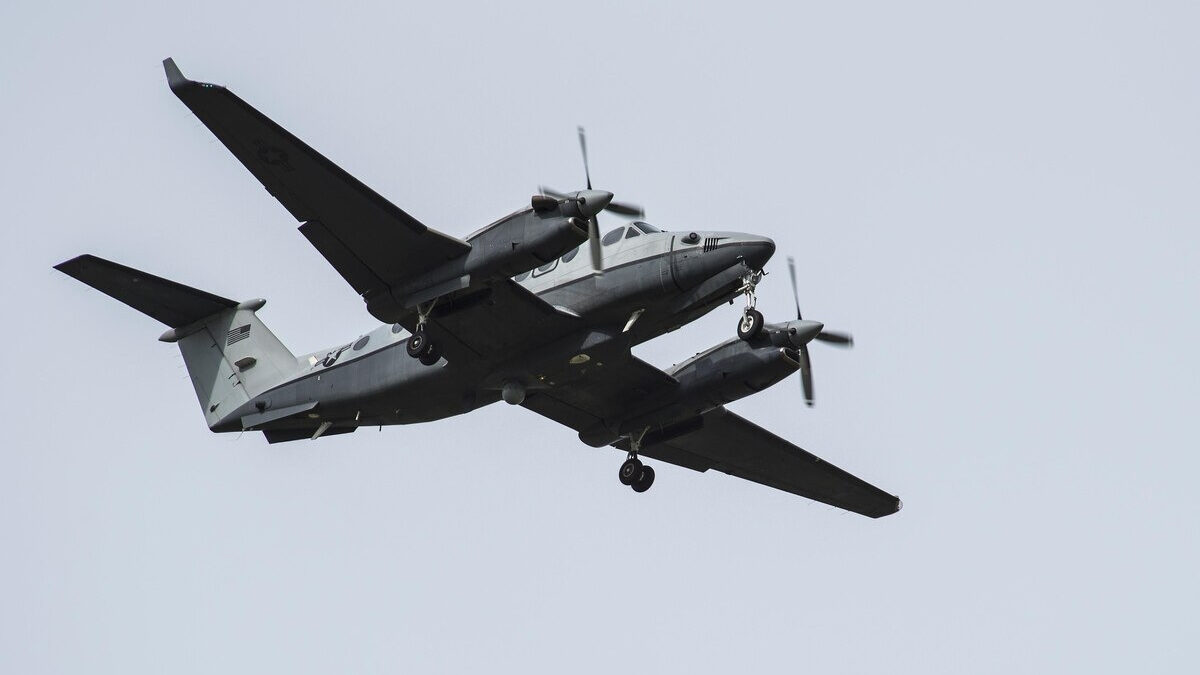
DAYTON, Ohio — A Hawker-Beechcraft MC-12W Liberty aircraft flies overhead at the National Museum of the U.S. Air Force on October 26, 2016. (U.S. Air Force photo by Victoria Thomas)
A Russian fighter jet had harassed a manned United States intelligence aircraft over Syria, a senior American military commander said on July 18.
According to Lieutenant General Alex Grynkewich, the commander of U.S. Air Force Central Command, a Russian Su-35 fighter jet approached an American MC-12 intelligence aircraft over Syria on July 16, forcing the slower propeller plane to fly through the wake turbulence of the larger, faster jet.
The Russian maneuver reduced the crew’s ability to safely fly the MC-12 and put the four crew members’ lives at risk, Grynkewich said, warning that it was a “new level” of unsafe and unprofessional actions by Russian pilots.
The MC-12 is a medium-to low-altitude, twin-engine turboprop aircraft. Its primary mission is providing intelligence, surveillance and reconnaissance support directly to ground forces.
Joint Chiefs Chair General Mark Milley downplayed the danger over the latest incidents, saying that U.S. forces in the Middle East have the authorities and capabilities to defend themselves if needed.
“If at any point in time, any of our troops sense that it’s a hostile act – a hostile intent – they will defend themselves,” said the commander at a news briefing. “We have a deconfliction channel that [Central Command] operates on a day-to-day basis in order to prevent any sort of incident or escalation. We’re monitoring it very closely.”
U.S. aerial operations over Syria are not sanctioned by the Damascus government, or coordinated with the Russian military group in the country.
Despite this, the U.S. has accused the Russian military of harassing its aircraft over Syria five times since the start of the month.
In an apparent response to the new American accusations, the Russian Center for Reconciliation in Syria said that U.S.-led coalition fighter jets violated Syria’s airspace over the southeastern area of al-Tanf area six times on July 17.
“Two pairs of the coalition’s F-16 and one pair of Typhoon fighter jets violated Syria’s airspace in the al-Tanf area, across which international air routes run, six times during the day,” said Rear Admiral Oleg Gurinov, deputy chief of the center. “The Russian side stresses that such actions create risks of air accidents with civilian planes performing regular flights.”
According to Gurinov, 14 violations of the deconfliction protocols of December 9, 2019 linked with the flights by the coalition drones were also detected.
The current high tensions in Syria are the result of recent attempts by the U.S. to expand its military presence in the country under the pretext of fighting ISIS. The American refusal to coordinate with the Russian side could eventually cause a dangerous incident.
MORE ON THIS TOPIC:

